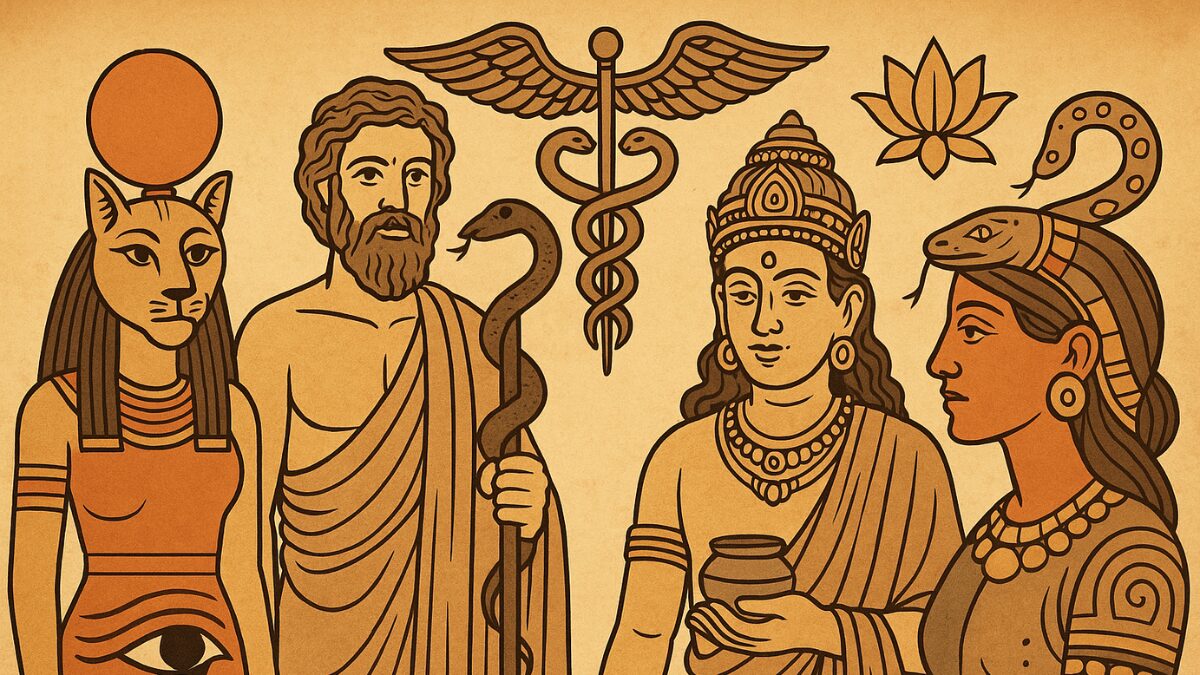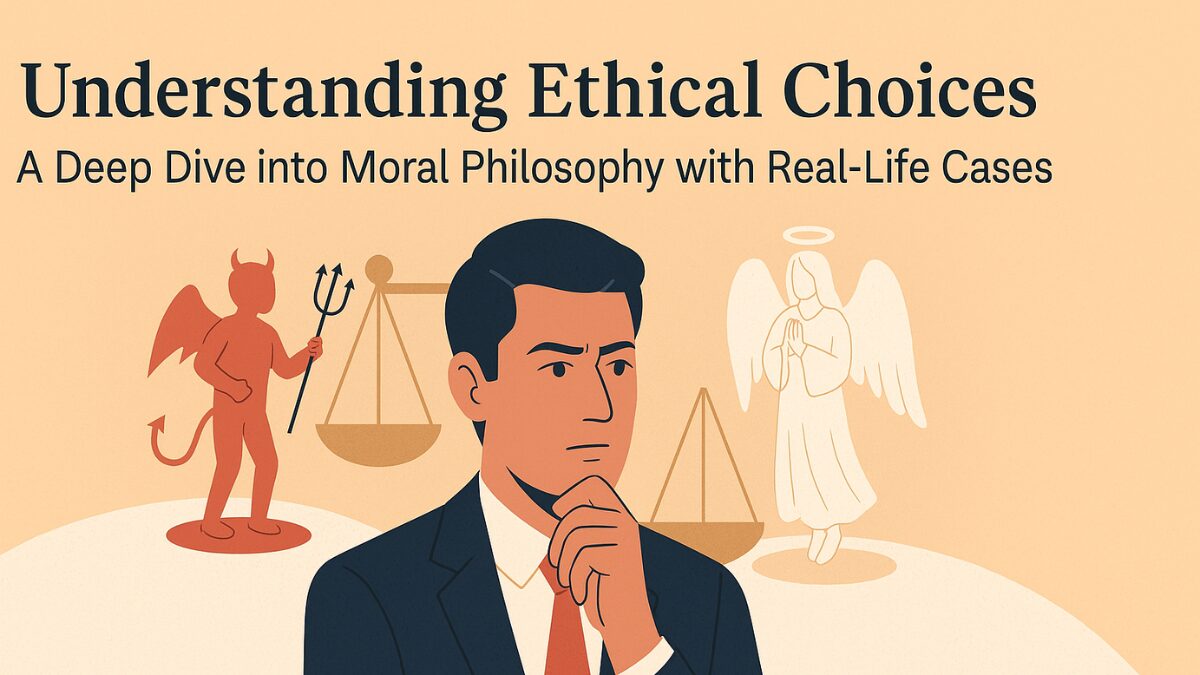Discover the Ancient Gods of Medicine and Spiritual Healing through their powerful symbols, sacred rituals, and how they continue to influence modern healing practices and spiritual traditions.
Introduction
The history of medicine is not solely rooted in science; it is also deeply embedded in mythology, spirituality, and ancient belief systems. From early civilizations like Egypt, Greece, and India to Indigenous and tribal cultures, healing has always been seen as both a physical and spiritual act. The Ancient Gods of Medicine and Spiritual Healing: Symbols, Rituals, and Modern Influence explores the divine figures once revered for their power to cure, restore, and protect. Their influence continues to resonate in today’s medical symbols, holistic practices, and spiritual traditions.
The Origins of Medicine in Mythology
Long before hospitals and pharmaceuticals existed, people turned to divine beings for healing. In nearly every ancient culture, gods and goddesses were assigned the role of healers. They governed over herbs, dreams, diseases, and miracles. Ancient texts, sacred ceremonies, and temple inscriptions reveal how deeply intertwined healing was with the spiritual world.
These healing deities were often believed to impart knowledge to mortals, either through divine visions, dreams, or mystical apprenticeships. Their temples functioned like early hospitals and centers for learning.
Prominent Ancient Gods of Healing Around the World
1. Asclepius – The Greek God of Medicine
Asclepius is perhaps the most recognized deity of healing from the ancient Greek world. He was known for his miraculous cures and is often depicted holding a rod with a serpent wrapped around it — a symbol still widely used in medical professions today.

Temples dedicated to Asclepius, called Asclepieia, were centers of healing. Patients would sleep within the temple in a ritual called incubation, hoping the god would appear in a dream to offer a cure or guidance.
2. Imhotep – Egyptian Polymath and Healing Deity
Initially a real person, Imhotep was later deified and worshiped as a god of medicine and wisdom. He was an architect, priest, and physician in ancient Egypt, and temples in his honor became pilgrimage sites for the ill.
The Egyptians also worshiped Sekhmet, the lion-headed goddess, as both a bringer and curer of plagues. Her duality represented the delicate balance between illness and health.
3. Dhanvantari – Hindu God of Ayurveda
In Hindu tradition, Dhanvantari is regarded as the divine source of Ayurveda, the ancient Indian system of medicine. He is often shown holding a pot of Amrit (elixir of life), signifying immortality and health.
Ayurvedic practices are still widely used today, including herbal treatments, yoga, meditation, and detox rituals, all said to originate from divine teachings.
4. Eir – Norse Goddess of Healing
Eir, from Norse mythology, was a handmaiden of the goddess Frigg and known for her exceptional healing powers. She is linked to medicinal herbs and was believed to aid in childbirth and women’s health.
Though less documented than Greek or Egyptian deities, Eir’s influence remains present in Scandinavian folk medicine and mythology.
5. Ixchel – Mayan Goddess of Medicine and Childbirth
Ixchel, the Mayan moon goddess, was revered for her role in fertility, medicine, and midwifery. Associated with healing waters and lunar cycles, she was often depicted with a serpent — a recurring healing symbol in multiple ancient traditions.
Temples and sacred wells dedicated to her were pilgrimage sites for those seeking blessings for childbirth and wellness.
Healing Symbols and Their Spiritual Meaning
The Ancient Gods of Medicine and Spiritual Healing left behind rich symbolism that continues to carry significance. These symbols weren’t mere decorations; they encoded wisdom and divine energy. Many are still used today, knowingly or unknowingly, in both spiritual and medical contexts.
| Symbol | Origin | Meaning |
|---|---|---|
| Rod of Asclepius | Greek | Healing, medicine, and renewal |
| Caduceus (Hermes’ Staff) | Greek | Mistakenly used in medicine, symbolizes commerce and balance |
| Serpent | Multiple Cultures | Rebirth, regeneration, wisdom |
| Lotus Flower | Hindu and Buddhist | Purity, enlightenment, healing |
| Eye of Horus | Egyptian | Protection, health, restoration |
These symbols were often worn as amulets, engraved on temple walls, or used in rituals to invoke divine aid.
Ancient Rituals of Healing and Spiritual Connection
Healing rituals often combined herbal medicine, prayer, music, dance, and offerings. They were designed to align body, mind, and spirit, reinforcing the idea that healing was holistic.

Examples of Ancient Healing Rituals:
- Dream Incubation in Asclepieia: Patients slept in sacred temples to receive healing dreams.
- Ayurvedic Panchakarma: A five-step detox ritual believed to remove toxins and restore spiritual balance.
- Egyptian Spells and Amulets: Used to ward off disease, often invoking the goddess Sekhmet or Imhotep.
- Shamanic Healing Ceremonies: Native traditions involved spirit journeys to retrieve lost soul fragments and restore health.
These rituals acknowledged emotional, spiritual, and physical aspects of wellness—something many modern healing systems aim to integrate.
Influence on Modern Medicine and Spiritual Practices
While modern science has made incredible strides in diagnostics and treatment, there remains a growing interest in holistic and integrative healing. Many principles associated with the Ancient Gods of Medicine and Spiritual Healing: Symbols, Rituals, and Modern Influence are being re-explored in areas such as:
- Mind-Body Medicine: Practices like meditation, visualization, and sound healing resemble ancient spiritual rituals.
- Integrative Medicine: Combines modern medical techniques with traditional healing systems like Ayurveda and Traditional Chinese Medicine.
- Medical Symbolism: The use of the Rod of Asclepius as a global symbol of medicine shows the lasting legacy of these ancient figures.
Modern spirituality has also embraced healing crystals, chakra balancing, and energy work—practices deeply rooted in ancient mysticism.
Table: Comparison of Ancient and Modern Healing Approaches
| Aspect | Ancient Approach | Modern Equivalent |
|---|---|---|
| Diagnosis | Dreams, divination, spiritual insight | Clinical testing, imaging |
| Treatment | Herbs, rituals, offerings | Pharmaceuticals, surgery |
| Emotional Healing | Chanting, music, ceremonies | Therapy, counseling |
| Spiritual Connection | Prayers to deities, sacred sites | Meditation, spiritual retreats |
| Holistic View | Mind, body, spirit alignment | Integrative medicine |
The Cultural Legacy of Healing Deities
Cultural festivals, temple pilgrimages, and healing chants dedicated to these deities are still practiced in parts of the world today. In India, Dhanvantari Jayanti is celebrated as Ayurveda Day. In Greece, ancient healing sanctuaries are preserved as historical sites. These practices keep the wisdom of the past alive and accessible.
Even in modern pop culture, references to gods like Asclepius and Imhotep appear in movies, literature, and educational material, reinforcing their relevance.
FAQs on Ancient Gods of Medicine and Spiritual Healing
- Are there healing gods in every ancient culture?
Yes, nearly all ancient civilizations had deities or spirits associated with healing and medicine. - Is the Caduceus the same as the Rod of Asclepius?
No, they are often confused. The Rod of Asclepius has one snake and is the true symbol of medicine. - Do healing symbols have power today?
Many believe these symbols carry energetic or psychological influence, especially in spiritual or holistic settings. - Can rituals from ancient times still be practiced?
Some modern practitioners adapt ancient rituals for spiritual healing or personal growth. - What is the difference between religious and spiritual healing?
Religious healing often involves specific deities or scriptures, while spiritual healing is broader and may focus on energy, intuition, or nature. - Are healing gods still worshipped today?
In some cultures like Hinduism, healing deities like Dhanvantari are still honored in festivals and rituals. - Why are serpents so commonly used in healing symbols?
Serpents represent transformation, rebirth, and the shedding of illness—making them ideal symbols of healing. - Did ancient healers use scientific knowledge?
Some, like Imhotep, combined empirical observation with spiritual beliefs, laying the groundwork for future medicine. - How did dreams play a role in healing?
In Greek and other cultures, dreams were seen as messages from the gods with diagnostic or healing instructions. - Can ancient medicine and modern science coexist?
Absolutely. Many integrative systems successfully blend ancient wisdom with modern evidence-based care.
Conclusion
The Ancient Gods of Medicine and Spiritual Healing: Symbols, Rituals, and Modern Influence serve as powerful reminders of humanity’s enduring quest for well-being. These deities embodied the union of spirit and science, ritual and remedy. Though times have changed, their legacy lives on in our symbols, our healing traditions, and our growing understanding that true health encompasses body, mind, and soul. Reconnecting with this sacred history not only enriches our understanding of healing but also invites a more holistic and spiritual approach to health in the modern world.










